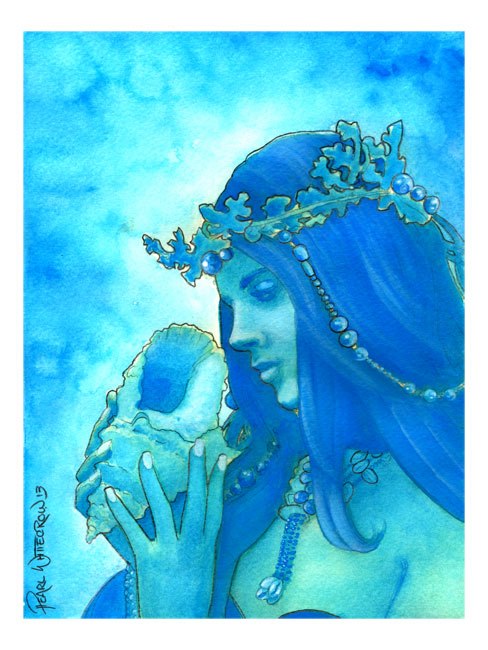
Warning: a couple of f-bombs.
~
I was raised in a multicultural family, and by extension, a multicultural community in rural Oklahoma in the Sac & Fox and Creek (Muscogee) Nations.
My cultural environment was a little more Earth-centered in belief than most communities at the time.
Yet because of the cultural ideals of the European transplant population, and likely due to generations of Native Americans being either killed or taken from their families to be educated in Western schools and indoctrinated by their Christian religion, many of the old ways have been lost along with the practices and ideals of living in accordance with nature.
There is still wisdom passed down from generation to generation, fragments of a greater, practical system of living, believing and being that is dependent not on simply philosophy, but living that philosophy.
When the ideal within the rural communities became that of, “go to college, get a degree, leave this place, make money, do better than we did,” we started losing our best and brightest students to the corporate world. The living traditions started to become fuzzy at best and at worst were devalued and placed on a shelf. Those who could manage to get a higher education and escape poverty did so, usually moving away from their community out of necessity. I was one such person.
Six years ago, I was working 60 to 80 hours per week as the general manager of a hotel. I was perpetually exhausted in mind, body and spirit. I had been in this field since I left college. As a naturally introverted person with degrees in Jewelry Technology and Business Management, I never intended to work in this field, but when the precious metals market dropped out shortly after I graduated, jewelers everywhere started going out of business at an alarming rate and the prospect of finding meaningful work in my field was dismal.
So, when I was offered my first position managing an 80-room, extended stay hotel, I took it and I dug into acquiring the skills and mindset I needed to do to become good at the job.
I stuck with this career path for six years and in that time managed three different hotels across the United States. I was married to the job.
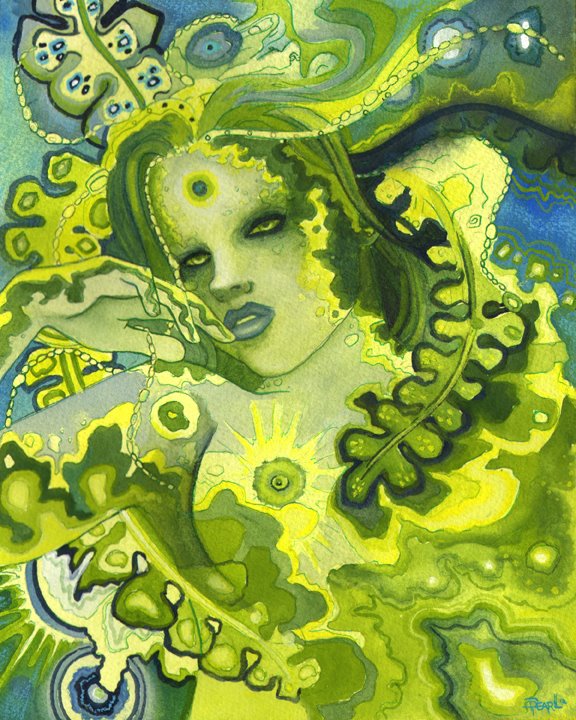
Sure, I was paid a large salary, worked seven days a week with perhaps one or two days off per month and lived on site. Yet, the money didn’t make up for the fact that I had no life outside of work. It didn’t make up for the fact that although I was constantly busy, I was miserable and I was bored. I didn’t begin to become conscious of the fact that something needed to change until my then husband and I suffered the loss of our daughter in 2008.
My heart broke, my spirit broke and nine months after her death, my mind broke and I simply shut down.
I passed out at work and was taken to the hospital, where I learned that although I believed that I had been sleeping at night, I was in fact severely sleep deprived. I was prescribed medication to help me sleep and for a few years I managed to continue to live the corporate lifestyle—even as it became increasingly difficult to maintain. I became addicted to the high of cocaine and MDPV to keep me going. Eventually my marriage fell to pieces and the father of my child and I decided to go our separate ways.
I persisted on this course until I was diagnosed with rhabdomyolysis. My body was eating its own muscle to survive and causing what could become irreversible kidney damage.
I had to stop using or I would die.
Withdrawals were physically and mentally painful. For the first time since the death of my daughter, I was broken wide open. But this time was different. Everything in my being fractured simultaneously. There was no where to hide from the truth that the drug addiction was only a symptom of a bigger problem: I had become deeply entrenched in a career and a lifestyle that did not allow me to keep going without seeking the unnatural fuel of drugs. I knew that if I went back to the job that eventually I would start using again. So, I quit using, quit my job, returned to the community that grew me and for the first time in my life, I felt, I began truly living.
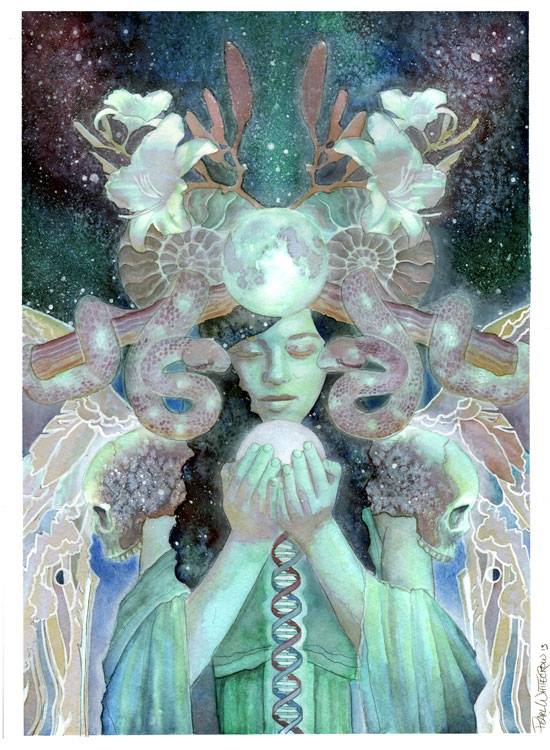
After much soul searching and introspection, I decided to embark on a journey that everyone had always told me was foolhardy and impossible. I took my savings and I began to pursue my lifelong dream of working as an artist and illustrator with the eventual goal of opening my own fully functioning silversmithing shop.
It has been an interesting journey so far, and six years later I am making a living working as an artist and illustrator, I run a silversmithing shop, write fiction and non-fiction and manage a small sustainable farm on five acres with an expansion to a 160 acre property planned for the coming year.
In an effort to give back, I also teach what I know to others whenever possible, consider myself to be a lifelong learner and selectively act as a life coach for those of the community in need, particularly young people. I have a full life compared to the lifestyle I was living which was busy, but ultimately as void of meaning and sustainability as a fast food hamburger.
A few weeks ago, a friend and I were sharing a precious moment of talk and tea and she said to me, “Pearl, you are such a good artist, but I worry that with all these other things in your life that you might become unfocused on your art.” Likewise, I often hear from friends and collectors of my work that they really admire artists who practice more than one art form, but I have no idea how they do it.
At the time, I smiled, told my well-meaning friend not to worry and referenced a popular internet meme which shows a Medieval style illustration of a man in a field with the caption: “Behold the field in which I grow mine fucks and see that it is barren.”
Then I told her that my answer to this dismal outlook is, “Behold the field in which I grow mine fucks and see that it is fruitful, for I practice good land management skills and selective crop rotation.” Yes, the language is crude, but it is truthful. She smiled and laughed and we enjoyed the rest of our time together.
This conversation led me to feel the need to share my philosophy of creativity, one which is intimately tied to my spiritual practices of living in accord with the laws of nature instead of struggling to work against them and striving to apply the natural laws of the macrocosm of the earth and known universe to the microcosms of my life and my psyche.
In such a way, I feel truly connected.
Instead of feeling apart from the world, I feel like I am a part of the world. I try to think, act and live in a way that not only honors the interconnectedness of all things and the ways of nature, but seeks to learn from nature and apply these ways to all aspects of my being and time on this earth.
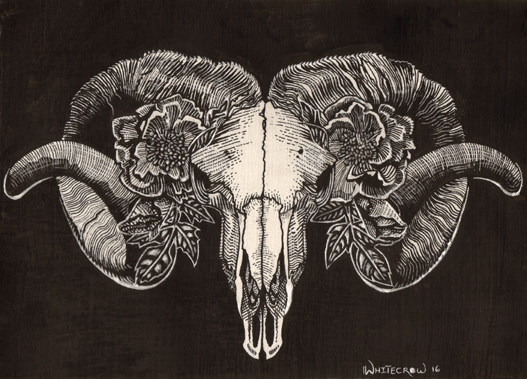
So, let’s get down to the idea of cultivating a creative mind and why this is important for everyone to do.
I have come to believe, from both personal experience and observation of others, that practicing several art forms and following several lines of study supports the development and growth of all of them.
As you read on, I would like to invite you to think of your creative mind (and perhaps by extension, your life and your very being) as a plot of land, as a garden or a farm. After all, much like a garden, our mind is an ecosystem, fully capable of amazing growth and the production of lovely, nourishing harvests. Like a garden, the health, productivity and quality of our lives and our work depend on how wisely we steward the terrain we have to work with.
I realize that many people may have only a few precious hours per day or week to practice what they consider to be their art, those practices that are collectively considered creative work, and it might seem, at first, as if they have less square footage (time) in which to cultivate their crops.
I disagree and would like to offer a different perspective for you to consider.
We all have the same number of hours in our days and although what you do to provide income for your household may or may not be traditionally thought of as creative work, I truly believe that given the right mindset, it is not just within the capabilities of the human spirit to do anything artfully and creatively, it is our birthright and intrinsic to our mental health.
If you have never considered yourself to be creative, before you roll your eyes and decide this has nothing to do with you, consider the actual definition of creativity:
cre·a·tiv·i·ty
/krēāˈtivədē/
noun
the use of the imagination or original ideas, especially in the production of an artistic work.
synonyms: inventiveness, imagination, innovation, innovativeness, originality, individuality; artistry, inspiration, vision; enterprise, initiative, resourcefulness
Now, consider the fact that so called, “original ideas” do not develop in a vacuum. They are not immaculate conceptions. Rather, original ideas are the product of seemingly disparate concepts coming together in the fecund, imaginative psyche to create something, to grow into being something that did not previously exist. This process is certainly not exclusive to those in fields that are traditionally considered “creative” or “artful,” and it is not a far stretch to see that the power of creativity is accessible to anyone at any time.
When a mother has devised a new way to soothe her child after trying every “tried and true” method and she draws from her non-maternal experiences to develop the individualized soothing technique appropriate to her child, she is performing an act of creativity.
When an engineer develops a new structure and they derive inspiration from natural forms such as the particular arc of a beetle shell or the geometry of a honeycomb, they are performing a creative act.
This fertile creative mindset is possible because the individual is consciously or unconsciously practicing tenets of what I have come to call permaculture of the creative mind. The ecosystem of their psyche has a rich variety of organism-like, bases of knowledge and experience that, disparate as they may seem, are functioning to support one another’s health and growth.
On the flip side, if someone is suffering from creative block or a lack of ideas, I posit that although there may be other reasons beyond their control, it is worth considering that this may be happening because of monoculture of the mind. Their focus is too narrow for creative ideas to develop and thrive to fruition—they have grown the same thing, focused on the same type of creative work or line of study for too long and their metaphorical soil is depleted.
So, let’s take an in-depth look at permaculture versus monoculture in the literal sense of agriculture and apply that to our creative minds so we can better understand the complexities of how and why this problem may develop, and what we can do about it if it does.
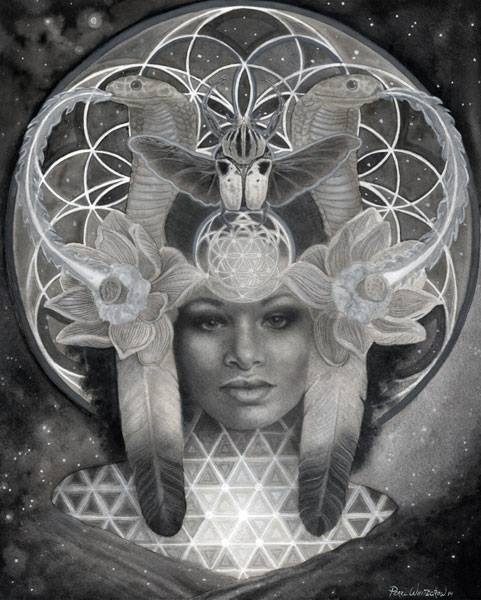
First let’s look at the most common model of industrial agriculturists: monoculture.
Think of vast fields of wheat or barley, plantations of a single species of fruit tree, or furrowed fields of a single vegetable crop. Modern commercial agriculture often seeks to increase yield, and so profits, by cultivating a single type of plant. The theory is that the farmer need only provide for the needs of a single species, with its individual characteristics, in order to grow a successful crop. And the economy of scale allowed by cultivating a single crop (by, for instance, requiring a single automated harvesting method) boosts profits for the farmer. In order to maintain a monoculture, the farmer must rely on both pesticides and artificial fertilizers. Plants simply are not biologically encoded to thrive in this situation and the ecosystem of the soil itself is so badly depleted that it cannot support a monoculture without chemical assistance.
Now let’s see what happens when we apply the precepts of the monoculture scheme to the human mind.
It’s easy to see that in modern life, our fields aren’t the only things that have been reduced to monocultures. As human beings who naturally strive toward creativity, we have been told to focus on one particular thing and get really, really good at it, to put on blinders and have a single focus. This can be a helpful mindset when we are task oriented in the moment, but as an overall model for our lives and our psyches, this structure can lead to burnout, depression and generally mentally impotent individuals. We have essentially been ordered to turn into cogs in a machine, clearly labeled with a single purpose, all for the sake of profit.
This is not what human beings were meant to be. It is not how we were meant to live in our interior or exterior lives. In order to maintain this unnatural, narrowly focused life wrought with boredom and bland as grits, human beings are increasingly going to unhealthy excesses in attempts to make this boring, drudging life more bearable. Over reliance on distractions and pacifiers such as the excessive intake of entertainment and drug and alcohol addiction are the pesticides and synthetic fertilizers of modern life. They are the things that keep many people going on from day to day when due to the unnatural pressures and demands of their environment; they should have ceased to function years ago.
Now, let’s look at the traditional method of agriculture: permaculture.
Permaculture gardening promotes biodiversity. It seeks to maximize the number of productive species of plant within a plot, not only to offer the gardener a diverse and vibrant number of crops to harvest for the kitchen, but also so that the ecosystem is itself strong, with different plants performing different functions so that all can thrive. Permaculture design seeks to avoid any one thing—be it a species of insect, a ground cover plant or an extreme weather event—becoming too influential on a site, to the detriment of the other valuable parts of the ecosystem.
There are many wonderful companion planting plans and crop rotation schedules in literal agricultural practices. Likewise, there are multiple co-supportive creative practices. For the sake of keeping it simple, let’s examine the classic, time tested trio of corn, beans and squash, otherwise known as “the three sisters.” These three do well together because the beans produce the nitrogen that the corn needs to thrive, the corn produces the stalk that the beans and squash need to climb, the ground shade of the squash helps to retain extra moisture for all three and in the end the combination produces a nutritionally complete protein.
So, what happens when we apply the principles of permaculture to the human mind?
This system is not only the traditional way of growing plants; it directly correlates to the traditional method of growing professionals in every field of expertise. Once upon a time, not so long ago, physicians were taught not only how to compound medicines and perform surgery, they were also taught anatomical and life drawing skills which in turn served not only to inform their memory of what a scapula looked like, the practice of drawing in and of itself helped the surgeon to develop fine motor control and the kind of eye-hand coordination that would prove invaluable to a surgeon.
In traditional artistic ateliers, an aspiring young artist would be taught drawing, painting and sculpture, as well as dissection of anatomy. Drawing is an excellent foundation; it trains the mind to see shape and form accurately and to produce aesthetically pleasing and balanced compositions. Sculpting informs the drawing by understanding in a tactile way how light moves over a three dimensional form, what shapes produce which shadows, and where and how light and shadow merge. Painting delves into the realm of color and the dissection and study of anatomy enables the artist to understand the underlying mechanics of form and movement. The one informs and supports the others and together, they grow stronger, longer.
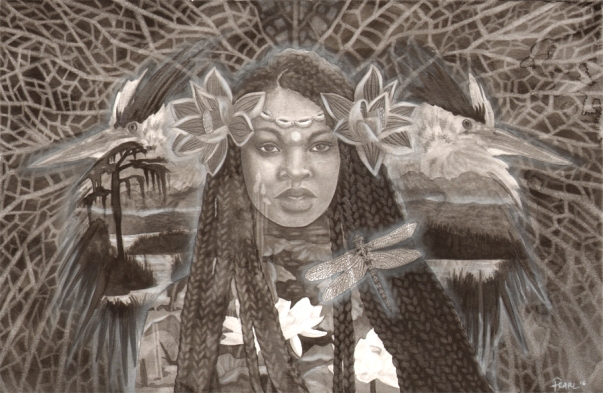
These companion planting model-like learning environments produced some of the most brilliant minds the world has ever known.
Whether the mind is self-educated or groomed within the walls of an institution of higher learning, we as human beings are capable of producing great creative acts and ideas, but it requires diversification of the mind on an individual level in order to do so.
Of course, feel free to discuss and dream up creative practices and interests that suit your own skills, interests and aptitudes. Though we may all have the same hours in the day, or the same basic “acreage” to work with, we do not all have the same type of terrain, or aptitudes and interests. We are all unique individuals with similarly unique experiences, perspectives and skills.
For many still entrenched in the corporate world, it may be more pragmatic to consider the middle ground between monoculture and permaculture—this would be a practice known as crop rotation. The most common agricultural crop rotation in America, on an industrial scale is corn, soybeans, corn. Planting soybeans between corn crops naturally replenishes the nitrogen content of the soil that corn needs to thrive.
Many people achieve a similar effect in their lives outside of their job by having a hobby that they are deeply interested in and excited by. Hobbies are a wonderfully healthy means of replenishing our psychic soil and preventing burn out.
When the microcosmic garden of the individual is a variety-rich, creative environment, the macrocosmic landscape of the community and the greater territory of the society benefits greatly; it is a truism that we must become the change we want to see in the world, and I believe that any personal change begins with our thoughts and our perspectives.
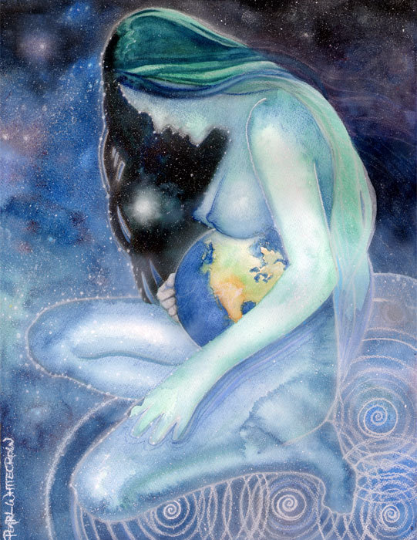
If there is one thing that I hope you, the reader take from this, it is that creativity is not the domain of a select few elites, it is our birthright as human beings.
You are not a cog in a machine, you are a growing, living ecosystem with the potential to bring to fruition novel things and thoughts, and more, now than ever, the world needs original ideas and new ways of navigating the future.
~
Author: Pearl Whitecrow
Images: Artwork courtesy of author.
Editor: Catherine Monkman










Read 1 comment and reply